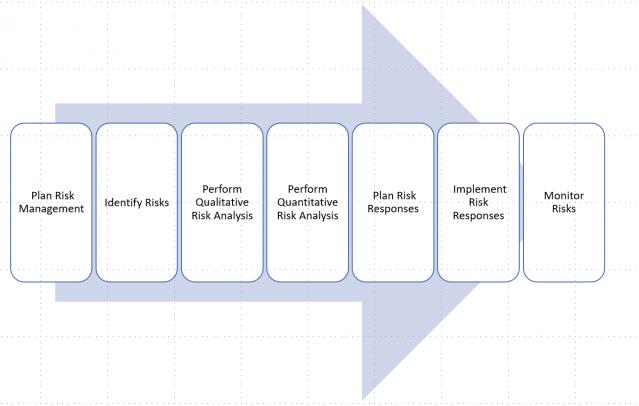Project Risk Management includes planning for risk management, finding risks, analyzing them, planning how to respond, putting those responses into action, and keeping an eye on the risks on a project (PMI -PMP) . To improve the chances of a project succeeding, the goals of project risk management are to raise the chances and/or effects of positive risks and lower the chances and/or effects of negative risks.
The Project Risk Management processes are:
- Plan Risk Management
- Identify Risks
- Perform Qualitative Risk Analysis
- Perform Quantitative Risk Analysis
- Plan Risk Responses
- Implement Risk Responses
- Monitor Risks
Important Ideas for Managing Project Risk
As unique endeavors with different levels of complexity that aim to bring benefits, all projects are risky. As they do this, they have to deal with assumptions and limits, as well as the changing and sometimes conflicting demands of different stakeholders. To create value while balancing risk and return, organizations should choose to take project risk in a planned and controlled way.
The goal of Project Risk Management (PMI -PMP ) is to find and handle risks that aren’t covered by any of the other project management methods. Without proper management, these risks could lead to the project deviating from the original plan and not meeting the project goals. So, the success of a project is directly linked to how well Project Risk Management works.
There are two levels of risk in every job. There are risks that come with every project that can make it harder to reach its goals. This is also important to think about: the general project’s riskiness comes from adding up the risks of each individual project and other sources of uncertainty. The following terms describe the two types of risk that can happen in a project:
- Individual project risk
- Overall project risk
Individual project risks can affect project goals in either a good or bad way if they happen. The goal of project risk management is to take advantage of or improve positive risks (opportunities) and avoid or lessen negative risks (threats). If you don’t handle threats properly, they could cause issues like delays, higher costs, poor performance, or even loss of image. If you take advantage of opportunities, you might get benefits like less time and money spent, better success, or a better reputation.
The overall risk of a project can also be good or bad. Undertaking overall project risk management aims to keep project risk exposure within a reasonable range by boosting positive variation drivers and lowering negative variation drivers while increasing the chance of meeting overall project goals.
Because risks will keep coming up during the project, Project (PMI -PMP ) Risk Management steps should be done over and over again. Planning for risk starts with making the project strategy. Along with managing and keeping an eye on risk, the project should stay on track and deal with any new risks that come up.
If the project team wants to successfully manage risk on a certain project, they must first decide what level of risk is acceptable in order to reach the project goals. In this case, measurable risk thresholds show how much risk the company and project stakeholders are willing to take. Risk thresholds show how much deviation from a project goal is allowed. They are clearly stated, shared with the project team, and taken into account when figuring out the project’s risk effect levels.
References :
PMBOK® Guide – Seventh Edition
The post Project Risk Management appeared first on My Engineering.

